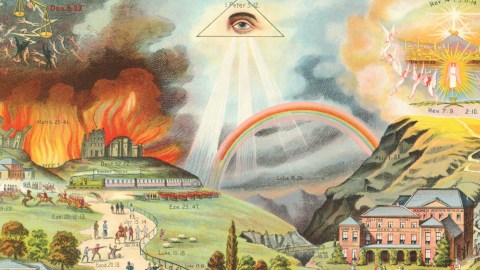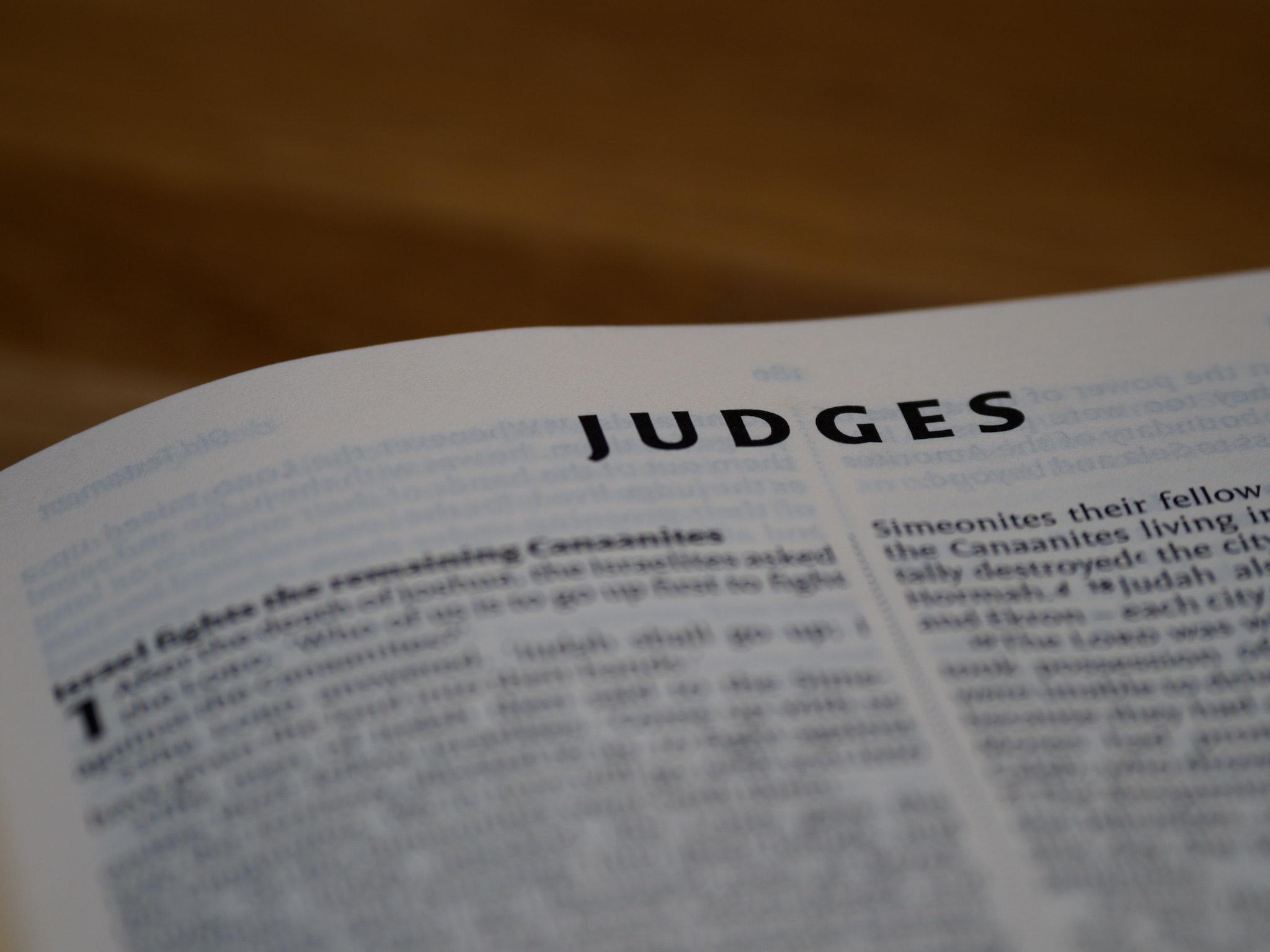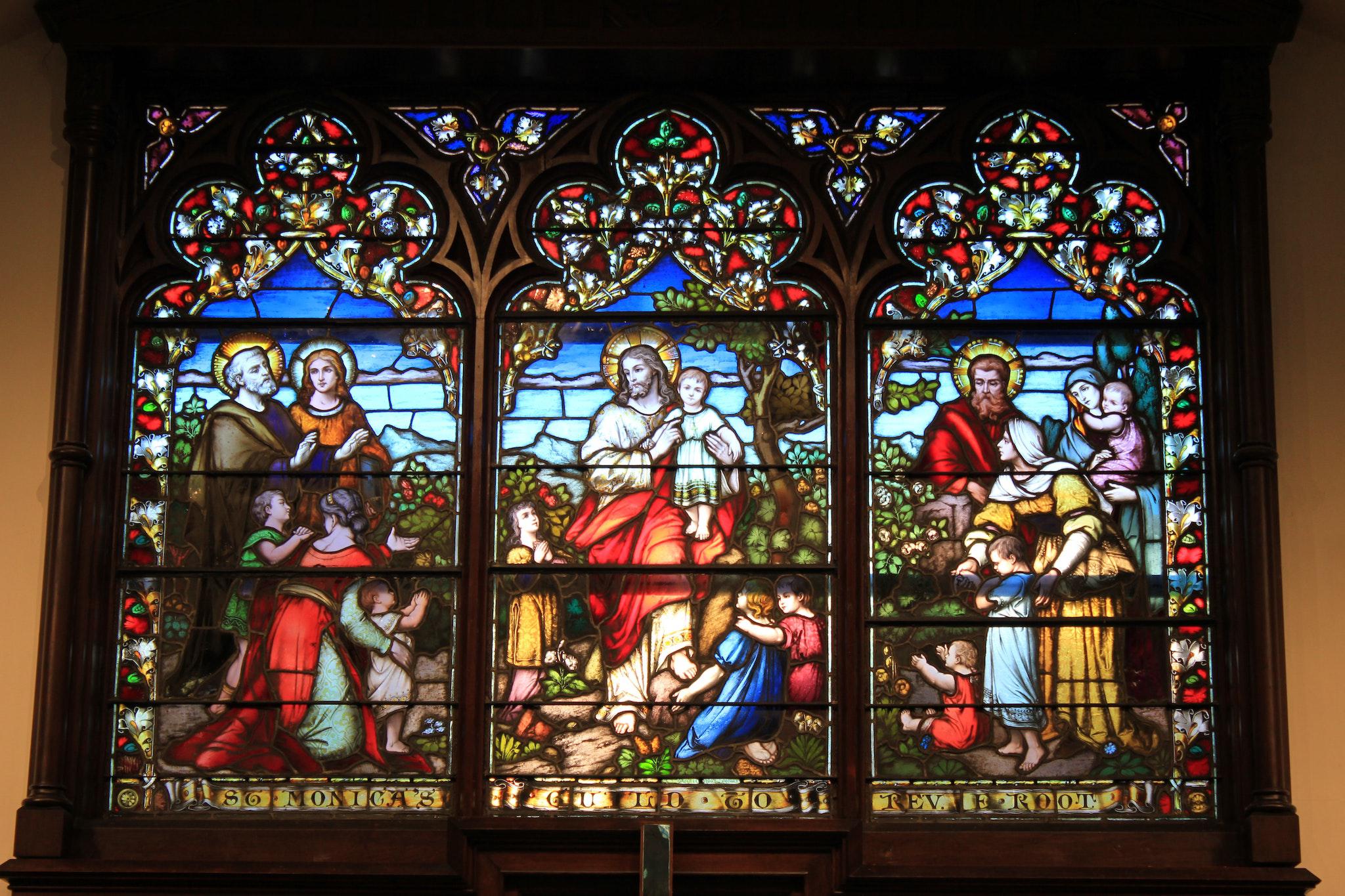Headed for heaven or hell? This roadmap will help

Image: British Museum - CC BY-NC-SA 4.0
- This moral topography shows two walks of life with very different outcomes: heaven and hell.
- It all starts with a simple choice: the broad gate or the narrow one. From there on in, follow the Bible verses to your choice of afterlife.
- Despite the map's stark, binary landscape, sinners can still repent and good Christians may be tempted by the Devil.
Forked path
If your path in life is pleasant and comfortable, reflect on your final destination: it may be eternal hellfire. For the road to heaven is steep and – wait, there are lions?
In late 19th century England, Christian open-air preachers used this picture of ‘The Broad and Narrow Way’ to illustrate the stark choice their audiences faced.
The journey of life was presented as a forked path through a moral landscape, with Biblical verse as signposts along the two very different routes. The key verse is Matthew 7:13-14, right at the beginning, where the key choice has to be made:
“Enter ye in at the strait gate: for wide is the gate, and broad is the way, that leadeth to destruction, and many there be which go in thereat: Because strait is the gate, and narrow is the way, which leadeth unto life, and few there be that find it.”
Bacchus and Venus
A set of finely dressed ladies and gentlemen can be seen admiring the attractions behind a stone gate, topped by Bacchus and Venus – the pagan gods of intoxication and passion – holding aloft a large Welcome! sign. A more modest sign to the right indicates this is the Road to Perdition, while a red-fingered hand underscores the point: Death and Damnation.
Will they go in? Don’t let the easy airs of those fine people in top hats and fancy dresses fool you. These souls are in the wilderness, being tempted by the Devil (Hebr. 3:7-8).
There’s still a chance they might choose the right path, the grass seems to whisper: “The Lord (…) is (…) not willing that any should perish, but that all should come to repentance.” (2 Peter 3:9).
But alas! A group of revellers has passed the gate, invoking the wrath of the Almighty: “Ye adulterers and adulteresses, know ye not that the friendship of the world is enmity with God? Whosoever therefore will be a friend of the world is the enemy of God.”
Apparently, those enemies include cyclists, smokers, motorised vehicle aficionados, ballroom dancers, card players and toast masters (Isaiah 5:22 heaps woe unto those who imbibe wine and strong drink).
Indications of non-godliness
Things get grim quick on the road to hell. Here we see a man clubbing his donkey. Not nice, the Bible agrees: “A righteous man regardeth the life of his beast: but the tender mercies of the wicked are cruel” (Prov. 12:10).
We see a fistfight, pickpockets at work, and day drinking (again displeasing Isaiah).
Buying oxen (Luke 14:16-18) and marrying a wife (Luke 14:20) are two of the excuses for men not to accept the invitation to a godly life. Also serious indications of non-godliness: taking out a loan and buying a lottery ticket.
The bag across that man’s right shoulder is stuffed with coin, the verse from 1 Timothy tells us: “For the love of money is the root of all evil: which while some coveted after, they have erred from the faith, and pierced themselves through with many sorrows.”
Adjoining the road to hell are taverns, theatres, and gambling houses. Even if you beat the casino, you still lose: “Now this man purchased a field with the reward of iniquity; and falling headlong, he burst asunder in the midst, and all his bowels gushed out.”
Gosh! And things get worse further down the road, with some roadside killing and general divine displeasure for those not yet dead.
Sunday train to hell
The flames are a giveaway: this story does not end well. In keeping with the pious topographer’s curious interest in modern modes of transport as signs of moral turpitude, a Sunday train skirts between the fires of hell and the scene of a battle.
A lot of smiting and slaying produces no winners, only losers: “Even the carcass of men shall fall as dung upon the open field, and as the handful after the harvestman, and none shall gather them.” (Jer. 9:22).
As cities topple and silhouettes of sinners writhe in the fire, bat-like devils harvest the souls of evil-doers, accompanied by some of Scripture’s most thunderous verse:
- “A fire is kindled in mine anger, and shall burn unto the lowest hell, and shall consume the earth with her increase, and set on fire the foundations of the mountains.” (Deut. 32:22)
- “Depart from me, ye cursed, into everlasting fire, prepared for the devil and his angels.” (Matth 25:41)
- “Thou art weighed in the balances, and art found wanting.” (Dan 5:27)
The Strait Gate
Perhaps let’s see what’s behind the other door then? The strait gate that leads to the Way of Salvation attracts a more modestly dressed crowd.
No wonder: they are here to be relieved not of their boredom, like those fancy folk next door, but of their burden: “Come unto me, all ye that labour and are heavy laden, and I will give you rest.” (Matth. 11:28). But everybody is welcome, presumably also those without any particular load on their back: “Him that cometh to me I will in no wise cast out.” (John 6:37).
It’s a date! Through the strait (as in: ‘narrow’) gate we go. But wait a minute. There are some entry requirements: belief in the Son (John 3:36), and to be born again (John 3:3).
On the other side of the gate awaits the refreshing gurgle of a fountain springing from a rock. That’s the water of life, don’t you know (Rev. 22:17), and the rock is Christ (1 Cor. 10:4).
Through the church window on the right we see a sight grown rare of late: a priest left alone with a child.
“Be vigilant”
The journey to salvation is steep – hence the steps – but it requires at its outset no more than the firm faith of a child (2 Tim. 3:15), as unfeigned as that of its forebears (2 Tim 1:5). Of course, Jesus is your compass throughout: “I am the way, the truth, and the life: no man cometh unto the Father, but by me.” (John 14:6).
A church, a Sunday school and a religious institute provide virtuous counterparts to the theatre, tavern and gambling house on the other side.
Across the bridge, we witness various instances of divinely-inspired roadside assistance: “For I was an hungred, and ye gave me meat: I was thirsty, and ye gave me drink: I was a stranger, and ye took me in.” (Matt. 25:35). More works of mercy performed up the road.
In the grassy field on the left hand side, a preacher is booming from his pulpit to the gathered crowd: “As I live, saith the Lord GOD, I have no pleasure in the death of the wicked; but that the wicked turn from his way and live: turn ye, turn ye from your evil ways.” (Eze. 33:11).
There’s a break in the fence that separates this path from the evil one. Could it be that these listeners are sinners who, halfway up their trip to certain doom, have returned to the fold of the righteous? Quite possibly so; the man running across the bridge towards the Luke 15:20 verse exemplifies the parable of the prodigal son.
But repentance is not enough; a relapse is always possible, because danger is ever present, with its pointy claws and breath like sin: “Be sober, be vigilant; because your adversary the devil, as a roaring lion, walketh about, seeking whom he may devour.” (1 Pet. 5:8)
Lamb on Zion
If you make it past the lion, you’ve almost reached the last level of the game. It’s finally okay to breathe a sigh of relief. In Biblical lingo: “Bless the LORD, O my soul: and all that is within me, bless his holy name.” (Ps. 103:1).
The path still winds upwards, but the summit is in sight, as are the multitudes that people it: “all nations, and kindreds, and people, and tongues, stood before the throne, and before the Lamb, clothed with white robes, and palms in their hands.” (Rev. 7:9).
The name of the mount is Zion, and the number of those surrounding the Lamb is 144,000 (Rev. 14:1), a number discouragingly small to anyone less than rock solid in their faith. Yet elsewhere in Revelation, the number of the ‘elders’ around the throne is said to be “ten thousand times ten thousand, and” (for good measure) “thousands of thousands.” (Rev. 5:11) – a more hopeful calculation.
At this point of the journey, only a rainbow can bridge the gap between Both Places, because “between us and you there is a great gulf fixed: so that they which would pass from hence to you cannot.” (Luke 16:26).
Over it all hovers the Eye of God, looking down on all creation: “For the eyes of the Lord are over the righteous, and his ears are open unto their prayers: but the face of the Lord is against them that do evil.” (1 Peter 3:12).
As a symbol of divine providence, the Eye in the Pyramid also features on the Great Seal of the United States, and as such on the dollar bill. But this eye induces an even more chilling echo of ubiquity: it has the same color as Mark Zuckerberg’s eyes.
The Broad and Narrow Way was originally designed in Germany in 1862, making its way via Holland to England by the end of the decade. It was an effective tool in exemplifying some of the Bible’s key teachings to a Victorian audience with more appetite for piety than aptitude for study.
Map found here at the British Museum.
Strange Maps #1019
Got a strange map? Let me know at strangemaps@gmail.com.












